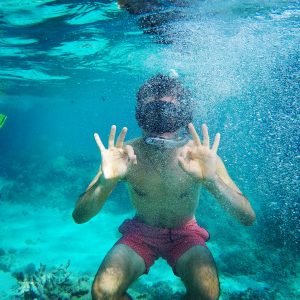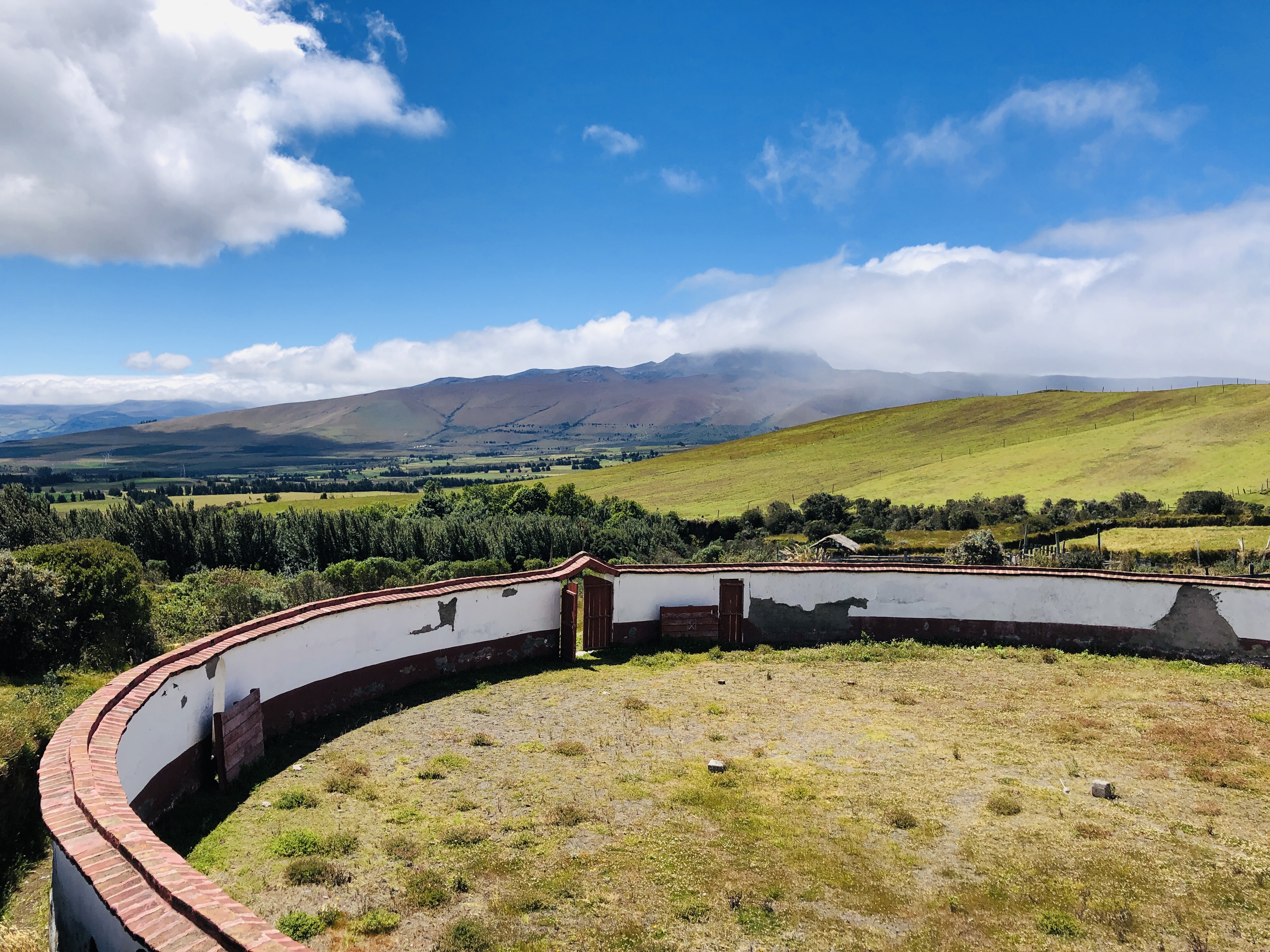A Weekend in Punta Gallinas by Tim Ghazzawi:
The northernmost point of South America is called Punta Gallinas, which, when translated, means “Chickens Point”. As the story goes, the place earned its name after a ship carrying livestock crashed there and scattered the surviving chickens across the land. I’m not sure I believe the story. I spent last weekend in Punta Gallinas and there were no chickens to be found. In fact I found almost no life at all. Picture a vast desertscape of yellow-brown earth, coarse, cracked, and dry, dotted with cacti and other prickly plants. Then imagine two bodies of water, in this case the Caribbean Sea and the Atlantic Ocean, connecting and colliding onto the desert’s craggy shores. It’s a place raw and unforgiving. Maybe the chickens were there at one time and simply did not survive. A curious set of events occurred while I was in Punta Gallinas. Some I caused. Others I participated in. Some simply were without explanation. In no particular order, I’ve outlined them below so you can share in my sense of enigma about the place:
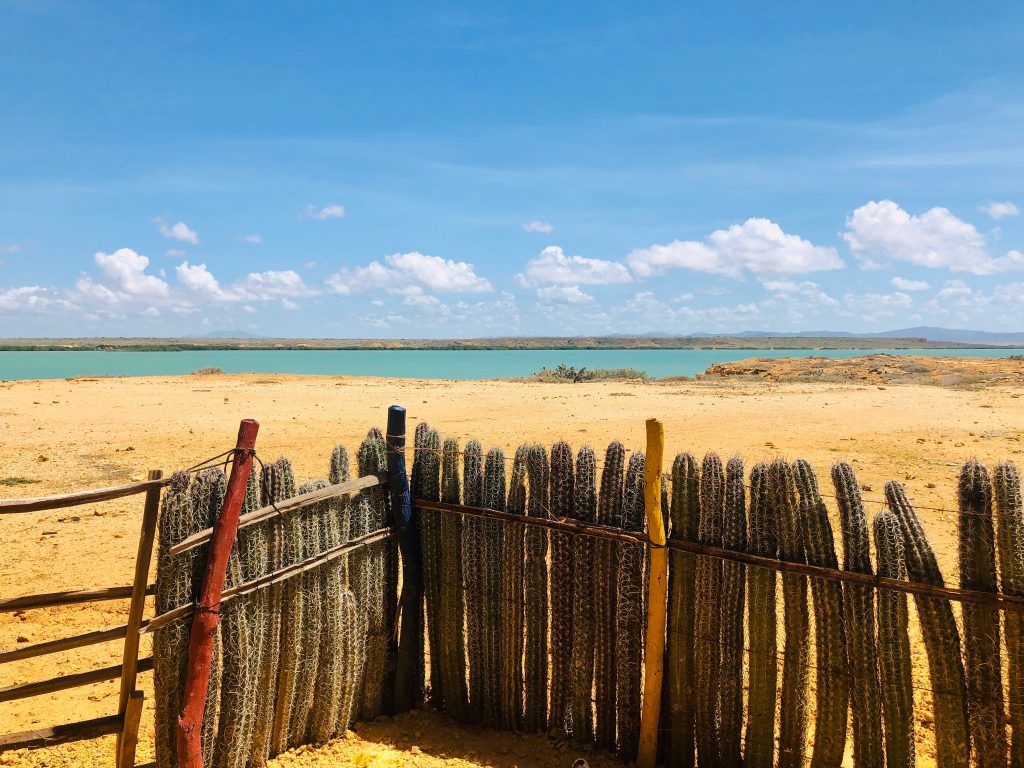
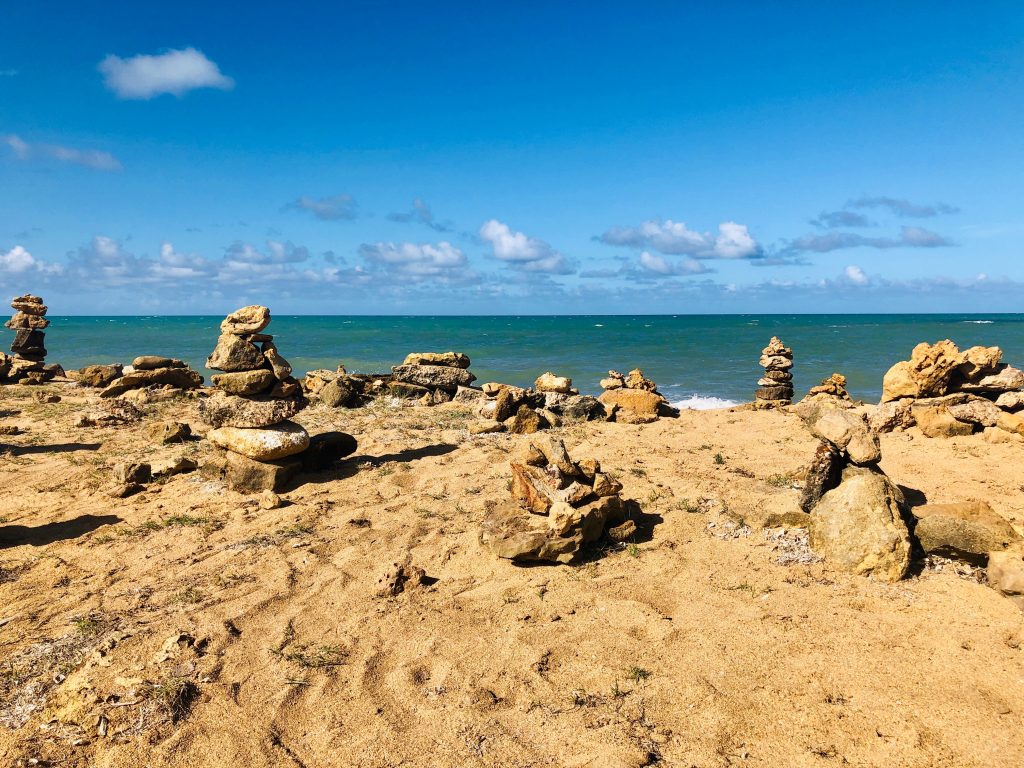
- A dead goat lay by the side of the road. Goats are wild in Punta Gallinas, the only evidence of animal life I saw there. To feed they extend their necks and tongues to reach the scarce leaves on the desert’s plants. This particular goat must have grown tired. Stewed goat was served for lunch throughout the weekend.
- While I swam in the waters just offshore, bioluminescent plankton traced my swirling arms and legs and illuminated my body in the dark sea. In the distance, thick bolts of lightening flashed from sky to earth but, because they were so far away, the thunder of it all never reached my ears.
- A fellow traveler refused to reveal her name or where she’d traveled from, not out of secrecy, but rather because she believed she came from another planet altogether. “I don’t feel a connection with humans or places,” she explained. Later that night as I stared up into the galaxies, I pondered the existence of aliens. Stars fell.
- On one stretch of coastline, past travelers had stacked rocks one on top of the other to make the mini-towers some also call cairns. I was told that for every rock I successfully stacked I’d earn myself a wish. I’d stacked maybe three rocks before my tower tumbled over. Instead I added a rock to someone else’s tower, probably screwing the whole wish-thing up for the both of us.
- Lastly there is a lighthouse at Punta Gallinas that looks and feels abandoned, graffitied and looted. Legend has it that the souls of men, drawn to the sea by sirens, haunt the area. Locals avoid the structure entirely. Each night the lighthouse shines with fidelity.
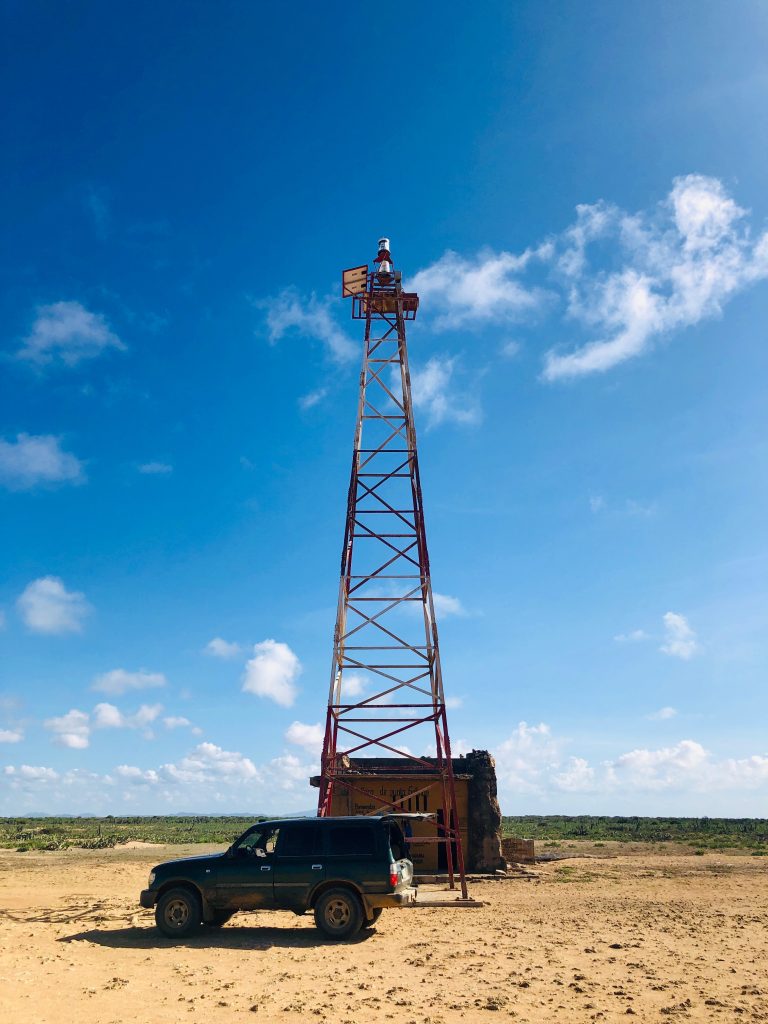
The Dunes of Taroa are my most enduring memory of Punta Gallinas. Made of the softest sands, these dunes throw themselves into the bordering waters, cascading downward as if the grains themselves are fleeing the oppressive heat. I never would solve the case of the missing chickens. If I was a chicken, though, the dunes are where I’d go. I could roll down them. Maybe go for a swim. (Can chickens swim?) I probably wouldn’t survive for long. The sunsets at least would be dope.
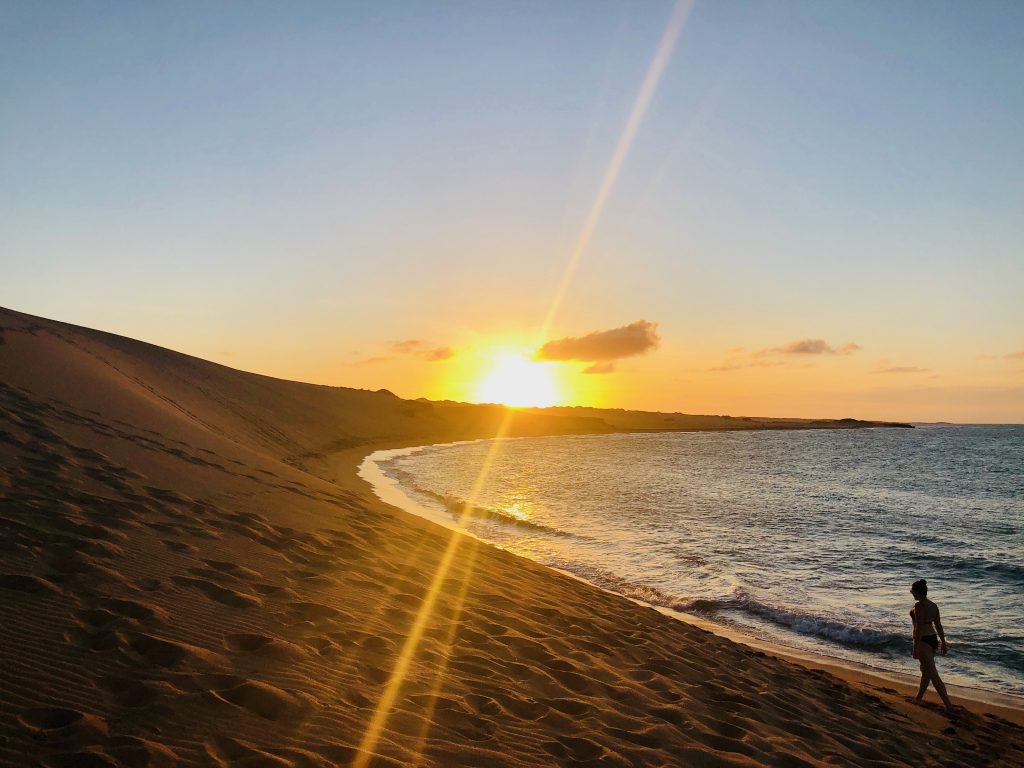
THE FACTS
Getting to Punta Gallinas can be a complicated mess. I personally took a bus from Santa Marta to Cuatro Vías, an unofficial taxi to Uribia, and then a shared truck to Cabo de la Vela. From there only organized tours travel to and from Punta Gallinas and coordinate your lodging, transportation, and food.
If you enjoyed reading about my desert adventure in Punta Gallinas, you might also check out the following stories related to my other recent South America travels:
- “In Cars with Strangers: A Reviving Return to Cuenca, Ecuador” by Tim Ghazzawi
- “Shoe Strings: My First Week in Ecuador” by Tim Ghazzawi
- “Things Not Exploding: A Game of Tejo in Salento, Colombia” by Tim Ghazzawi

